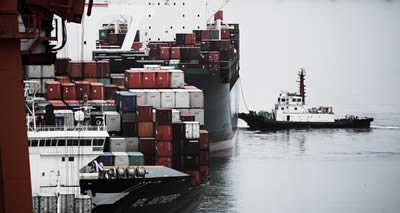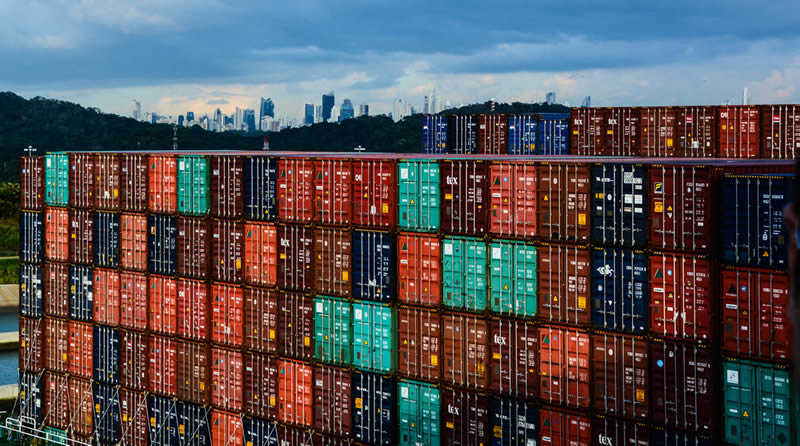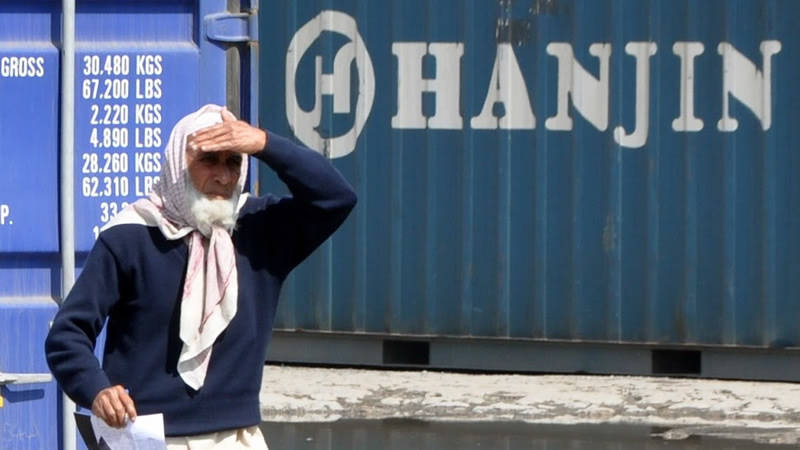Written by Jan Hoffmann of UNCTADArticle No. 10 [UNCTAD Transport and Trade Facilitation Newsletter N°76 - Fourth Quarter 2017]
Twenty years ago, when working for UN-ECLAC in Santiago de Chile, I was tasked with researching the causes and impacts of the process of concentration in liner shipping. Thanks go to my boss Larry Burkhalter, who had early on identified the importance of structural changes in shipping and their implications for seaports.
At that time, in 1997, the first post-panamax container ships had just entered service, and shippers, ports and regional shipping lines were concerned about the mergers and alliances among liner companies. My resulting study was published in 1998 under the title "Concentration in liner shipping: its causes and impacts for ports and shipping services in developing regions".

The study pointed out that "The size of the largest container ships has almost tripled within the last two decades." The largest ship at that time had a capacity of 6600 TEU - today's ships are three times larger.
The study also highlighted that "Recent mergers and acquisitions have resulted in some very large liner shipping companies. The top 20 carriers now control more than half of the world's container slot capacity" - today they control almost ninety per cent of TEU carrying capacity.
As regards consortia, the 1998 study said that "Since the beginning of the 1990s, liner companies have begun to form global alliances. The largest ten groupings now control about two thirds of the world's container slot capacity." Today, just three major alliances are left, and they control more than 80 per cent of capacity on most major routes.

The causes of further concentration
A major underlying cause for the process of concentration, in my view, continues to be the technological change towards higher fixed costs against lower variable costs. Still today, "new technologies lead to a changing cost function. In ports and shipping, these changes include an increased proportion of fixed costs as compared to variable costs.
This shift of the relation fixed costs/variable costs leads to increased scale economies. This, in turn, implies larger optimum company sizes and thus leads to a reduction of the number of players in the long-term market equilibrium."
Twenty years later, we continue to see a reduction of the number of players, such as the recent insolvency of Hanjing Shipping, as well as recent and announced mergers among various liner companies.

The problem with ever larger ships
Larger ships may help achieve savings through economies of scale and improved energy efficiency at sea. The moment the vessels reach a port, however, the impact of ever larger ships on total logistics costs may actually be negative, i.e. total logistics costs increase.
In the 1998 study, I had presented a "generally positive picture" as regards competition: "On a global scale, there are now fewer operators than in the past, but on most individual trade routes the number of lines competing for cargo has actually increased. For example, Asian lines have entered the North Atlantic trade, east-west lines are entering north-south markets and the feeder services of large lines are competing with traditional regional lines." (page 11). And overall, in the ensuing twenty years, freight costs did decline, and maritime connectivity increased.
Today, however, consolidation has reached levels that merit a renewed look at its implications and possible policy responses. We observe a growing number of routes where the process of concentration has led to oligopolistic or even monopolistic markets. Based on data from MDS Transmodal, we estimate more than one quarter of countries today are serviced by only one to four container carriers.
Access to the global container shipping network is an important determinant of a country's trade costs and competitiveness. Most of the least connected countries are Small Island Developing States (SIDS), which are often confronted with a vicious circle: There is not enough demand to attract frequent and competing shipping services - trading becomes costly and not competitive - and volumes drop even further.
For your agenda
Over the next 12 months, UNCTAD will further look at challenges and policy implications of the process of consolidation in shipping, especially as regards developing countries.
- The 2017 Liner Shipping Connectivity Index (LSCI) has just been published. See the LSCI development since 2004 http://stats.unctad.org/LSCI.
- On 25 October, our Review of Maritime Transport 2017 will be launched. It will include a special chapter on shipping networks and maritime transport connectivity. See http://UNCTAD.org/RMT.
- In coming months, we plan to publish a study on cabotage shipping services, an issue of particular relevance for connecting national, regional and overseas liner shipping services. See http://unctad.org/TLB.
- From 11 to 13 July 2018, UNCTAD will convene an Intergovernmental Group of Experts on Competition Law and Policy, including a special session on "Challenges faced by developing countries in competition and regulation in the maritime transport sector". See http://unctad.org/official-document/chapter-1-developments-international-seaborne-trade-9
- In September 2018, UNCTAD will launch its 50st anniversary issue of the Review of Maritime Transport, with a special focus on long-term trends in international shipping - and consolidation and competition will feature prominently in this analysis.
- Also in September 2018, UNCTAD plans to organize an ad hoc expert meeting on maritime transport issues, back to back to the first conference of the International Association of Maritime Economists (IAME) to be held in Africa. See http://www.iame2018.com.



